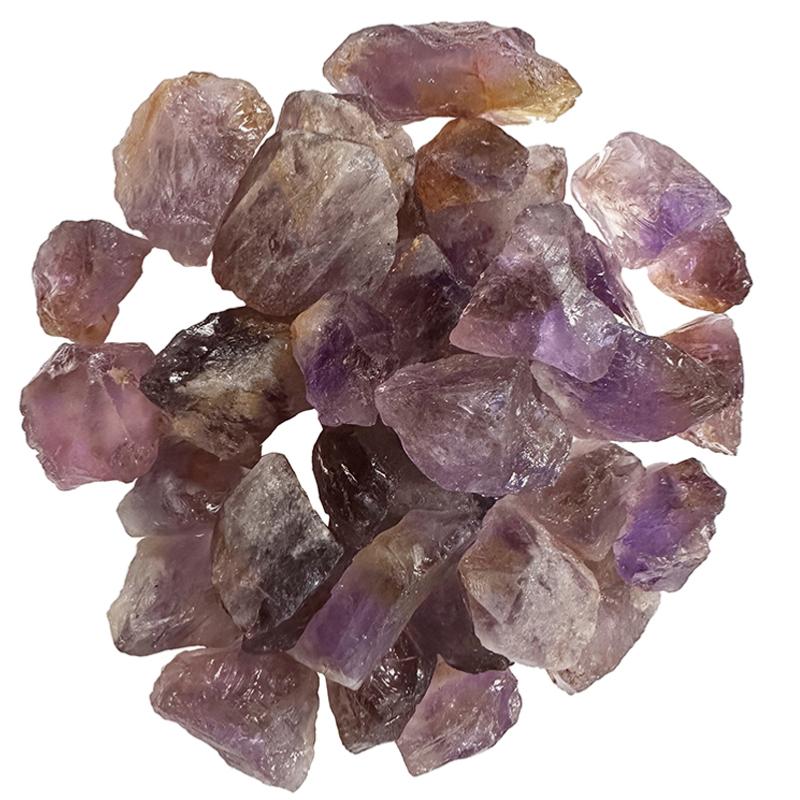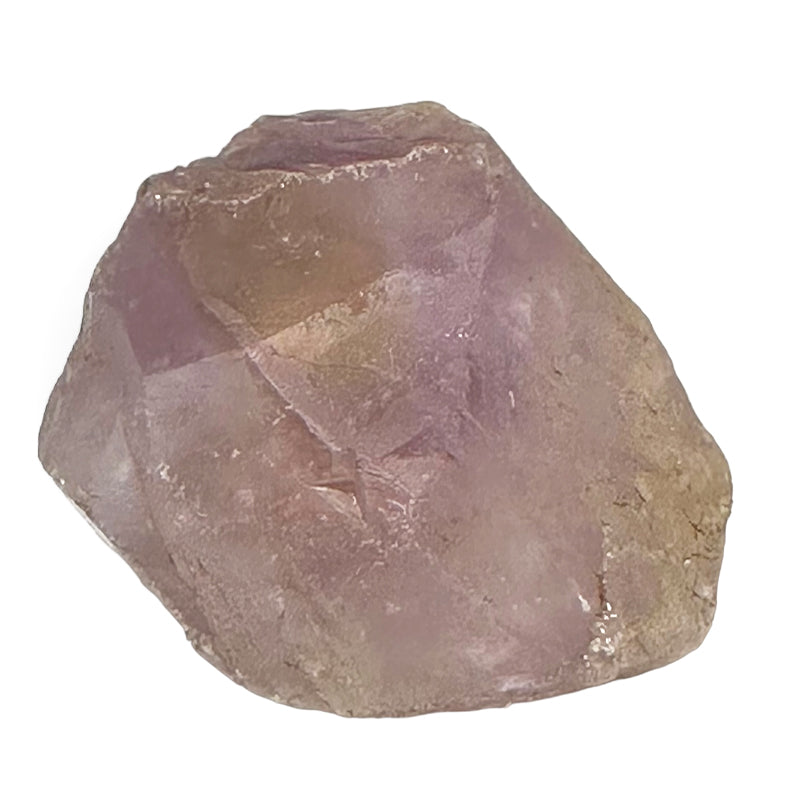1
/
of
2
Ametrine Bolivia A (raw stone)
AMET-B-01
8c984efa-30a8-5524-41cc-ae7b332135e6
028d80eb-2b30-41d4-b221-bda49eca04cf
- Regular price
-
4,90 € - Regular price
-
4,90 € - Sale price
-
4,90 €
Tax included.
Shipping calculated at checkout.
Couldn't load pickup availability
Learn more
AMET-B-01
Origin: Bolivia
Grade: A
Dimensions:
About 30-40mm
Weight:
Between 20 and 40g
Origin:
Bolivia
Grade:
A = good
Raw ametrine stone from Bolivia approximately 30-40mm
Shapes, patterns and colors may vary from one stone to another.
Shapes, patterns and colors may vary from one stone to another.
The name given to the ametrine stone comes from the contraction of the names “amethyst” and “citrine”. This stone was born from a natural geological process bringing together the 2 stones. From this mixture of quartz, the stone offers an unusual appearance. Indeed, it has 2 very distinct shades, the purple of amethyst and the yellow of citrine. It is an absolutely exceptional two-tone gem.
Moreover, these two colors do not mix, which gives these natural stones an unusual specificity. The brilliance of Ametrine is extremely impressive in the purest gems. Its magnificent colors are due to the presence of manganese for purple and iron for yellow.
Nowadays, jewelry making with ametrine is very recent. Jewelers have been using it since the 1980s and its commercial success has continued to grow ever since. Likewise, decorators and sculptors use it to create absolutely unique interior decoration objects with dazzling brilliance.
Anahi was the only daughter of the chief of a Bolivian tribe, the Ayoreos. Resplendently beautiful, she was the pride of her people, who adored her. One day, she met a conquistador from the Iberian Peninsula, Felipe de Urriola y Goitia. They immediately fell in love with each other. This conquistador possessed a charm and presence that immediately seduced Anahi. He then asked his father for Anahi's hand.
However, in the 17th century, it was customary to provide a dowry to the bride. Thus, the wedding was celebrated and as a wedding gift, the girl's father offered the conquistador a mine producing a two-tone stone. This ametrine deposit, symbol of spirituality and divine power, constituted the main dowry of this princely marriage. The conquistador paid little attention to it, because it was not gold, diamonds or emeralds.
After some time, Don Felipe was forced to return to Spain. He decided to take his wife with him, but his tribesmen did not agree. The princess was torn between her loyalty to her people and her love for her husband. However, she chooses to follow her husband. But his tribe didn't want to lose their princess. So they began to conspire to kill Don Felipe. Princess Anahi, informed of her tribe's plans, managed to warn Don Felipe and they fled. But during the pursuit, she was mortally wounded by her own subjects.
On her deathbed, the princess asked to see her husband one last time. She placed in his hands a stone from the mine offered as a wedding gift. When Don Felipe opened his hands, he discovered this magnificent stone of two shades. Thus, he understood that this stone was the symbol of the princess's suffering which had been shared between her tribe and her husband.
Following this tragedy, the mine was renamed Anahi in homage to the beautiful princess.
We know today that ametrine was introduced to the West by the Conquistadors, who brought it back as an offering to the Queen of Spain in the 17th century. This is how this quartz spread throughout Europe.
Ametrine comes mainly from Bolivia. However, other deposits are located in Brazil, the United States and Mozambique.
In Lithotherapy, ametrine is a soothing stone. It calms the torments of the mind, removes tension and stress. It helps overcome states of intense sadness. It is sometimes used during emotional shocks.
This stone facilitates and encourages imagination, reflection and concentration. It is a major asset for creative professions.
Result of the union of amethyst with citrine, ametrine has the same virtues as the two stones. It opens the mind and allows its wearer to overcome prejudices. This stone promotes change and helps with transition.
Ametrine is an excellent stimulus for the brain which facilitates learning and increases memory. This stone provides balance and regulates lack of confidence or, on the contrary, excess self-esteem.
Thus, its wearer is no longer dominated by emotions and can thus demonstrate an excellent analytical mind. It is said that this stone releases psychic and emotional blockages.
It is a stone of duality. It represents masculine energy with citrine and feminine energy with amethyst. Moreover, it is said that it is beneficial in couple relationships, because it maintains sexual desire.
Moreover, these two colors do not mix, which gives these natural stones an unusual specificity. The brilliance of Ametrine is extremely impressive in the purest gems. Its magnificent colors are due to the presence of manganese for purple and iron for yellow.
Nowadays, jewelry making with ametrine is very recent. Jewelers have been using it since the 1980s and its commercial success has continued to grow ever since. Likewise, decorators and sculptors use it to create absolutely unique interior decoration objects with dazzling brilliance.
Anahi was the only daughter of the chief of a Bolivian tribe, the Ayoreos. Resplendently beautiful, she was the pride of her people, who adored her. One day, she met a conquistador from the Iberian Peninsula, Felipe de Urriola y Goitia. They immediately fell in love with each other. This conquistador possessed a charm and presence that immediately seduced Anahi. He then asked his father for Anahi's hand.
However, in the 17th century, it was customary to provide a dowry to the bride. Thus, the wedding was celebrated and as a wedding gift, the girl's father offered the conquistador a mine producing a two-tone stone. This ametrine deposit, symbol of spirituality and divine power, constituted the main dowry of this princely marriage. The conquistador paid little attention to it, because it was not gold, diamonds or emeralds.
After some time, Don Felipe was forced to return to Spain. He decided to take his wife with him, but his tribesmen did not agree. The princess was torn between her loyalty to her people and her love for her husband. However, she chooses to follow her husband. But his tribe didn't want to lose their princess. So they began to conspire to kill Don Felipe. Princess Anahi, informed of her tribe's plans, managed to warn Don Felipe and they fled. But during the pursuit, she was mortally wounded by her own subjects.
On her deathbed, the princess asked to see her husband one last time. She placed in his hands a stone from the mine offered as a wedding gift. When Don Felipe opened his hands, he discovered this magnificent stone of two shades. Thus, he understood that this stone was the symbol of the princess's suffering which had been shared between her tribe and her husband.
Following this tragedy, the mine was renamed Anahi in homage to the beautiful princess.
We know today that ametrine was introduced to the West by the Conquistadors, who brought it back as an offering to the Queen of Spain in the 17th century. This is how this quartz spread throughout Europe.
Ametrine comes mainly from Bolivia. However, other deposits are located in Brazil, the United States and Mozambique.
In Lithotherapy, ametrine is a soothing stone. It calms the torments of the mind, removes tension and stress. It helps overcome states of intense sadness. It is sometimes used during emotional shocks.
This stone facilitates and encourages imagination, reflection and concentration. It is a major asset for creative professions.
Result of the union of amethyst with citrine, ametrine has the same virtues as the two stones. It opens the mind and allows its wearer to overcome prejudices. This stone promotes change and helps with transition.
Ametrine is an excellent stimulus for the brain which facilitates learning and increases memory. This stone provides balance and regulates lack of confidence or, on the contrary, excess self-esteem.
Thus, its wearer is no longer dominated by emotions and can thus demonstrate an excellent analytical mind. It is said that this stone releases psychic and emotional blockages.
It is a stone of duality. It represents masculine energy with citrine and feminine energy with amethyst. Moreover, it is said that it is beneficial in couple relationships, because it maintains sexual desire.



Ametrine Bolivia A (raw stone)
- Regular price
-
4,90 € - Regular price
-
4,90 € - Sale price
-
4,90 €
8c984efa-30a8-5524-41cc-ae7b332135e6
028d80eb-2b30-41d4-b221-bda49eca04cf
-
100% SECURE PAYMENT
Paypal, credit card, check, transfer
-
FREE DELIVERY
from 40€ purchase
-
SATISFIED OR REFUNDED
14 days to change your mind
-
CUSTOMER SERVICE AVAILABLE
contact@laboiteacailloux.com
Subscribe to our newsletter
to receive all our offers, good deals and new products from La Boite à Cailloux



